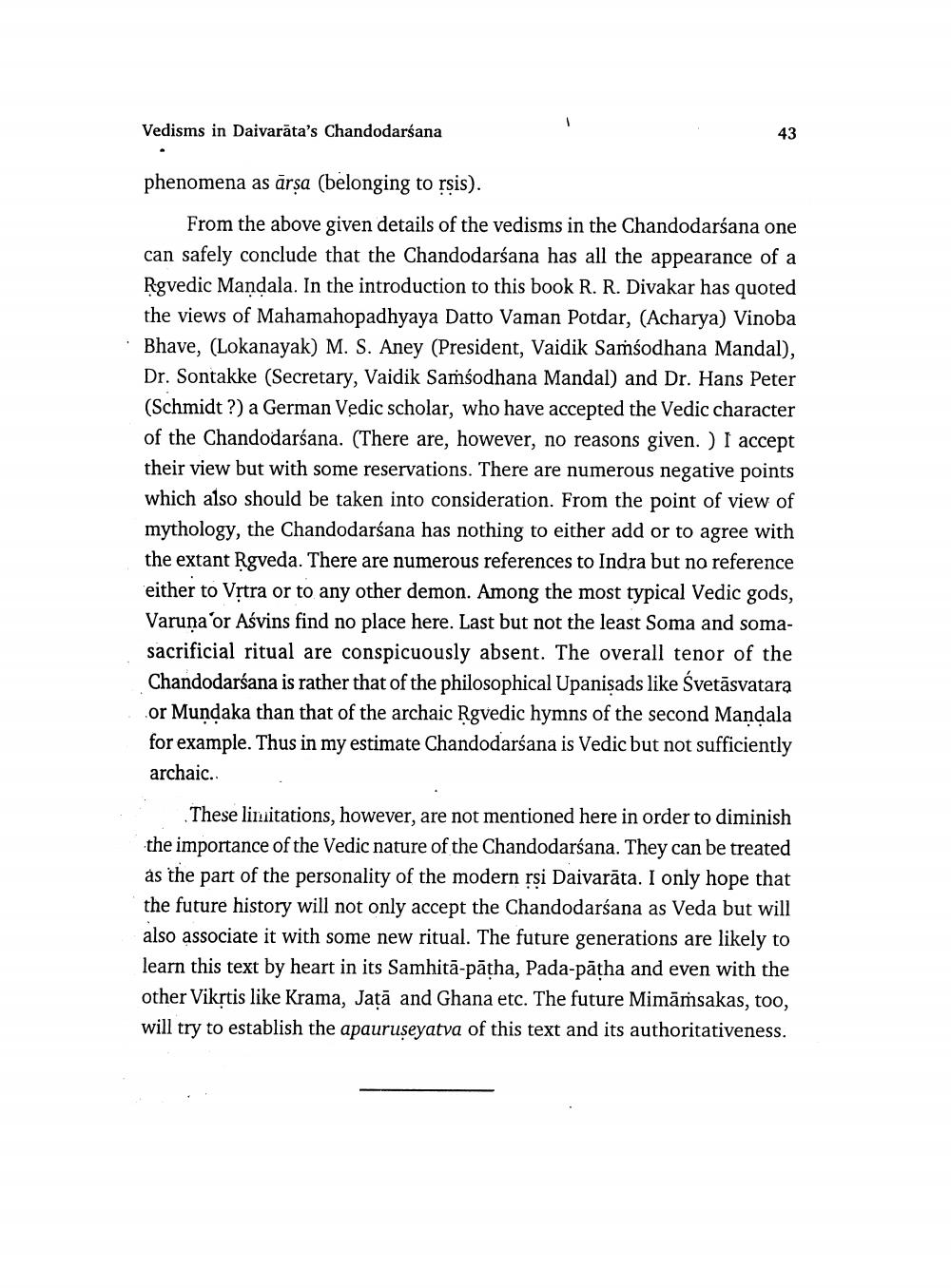________________
Vedisms in Daivarāta's Chandodarśana
43
phenomena as ārsa (belonging to rsis).
From the above given details of the vedisms in the Chandodarśana one can safely conclude that the Chandodarsana has all the appearance of a Rgvedic Mandala. In the introduction to this book R. R. Divakar has quoted the views of Mahamahopadhyaya Datto Vaman Potdar, (Acharya) Vinoba Bhave, (Lokanayak) M. S. Aney (President, Vaidik Samsodhana Mandal), Dr. Sontakke (Secretary, Vaidik Samsodhana Mandal) and Dr. Hans Peter (Schmidt ?) a German Vedic scholar, who have accepted the Vedic character of the Chandodarśana. (There are, however, no reasons given.) I accept their view but with some reservations. There are numerous negative points which also should be taken into consideration. From the point of view of mythology, the Chandodarśana has nothing to either add or to agree with the extant Rgveda. There are numerous references to Indra but no reference either to Vstra or to any other demon. Among the most typical Vedic gods, Varuna'or Aśvins find no place here. Last but not the least Soma and somasacrificial ritual are conspicuously absent. The overall tenor of the Chandodarśana is rather that of the philosophical Upanisads like Svetāsvatara or Mundaka than that of the archaic Rgvedic hymns of the second Mandala for example. Thus in my estimate Chandodarśana is Vedic but not sufficiently archaic.
.
These limitations, however, are not mentioned here in order to diminish the importance of the Vedic nature of the Chandodarśana. They can be treated as the part of the personality of the modern rsi Daivarāta. I only hope that the future history will not only accept the Chandodarśana as Veda but will also associate it with some new ritual. The future generations are likely to learn this text by heart in its Samhitā-pātha, Pada-pātha and even with the other Vikrtis like Krama, Jatā and Ghana etc. The future Mimāṁsakas, too, will try to establish the apauruseyatva of this text and its authoritativeness.




